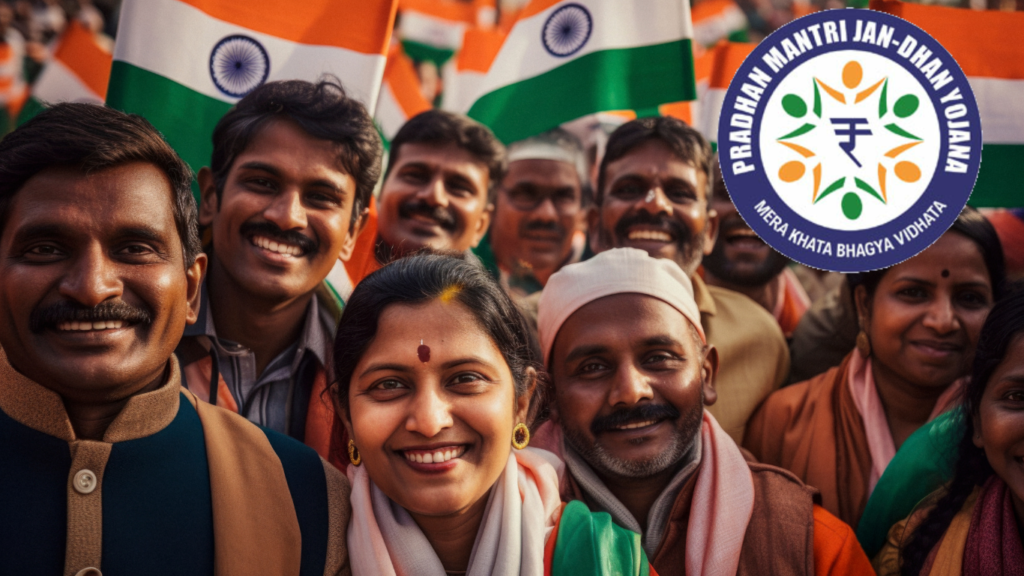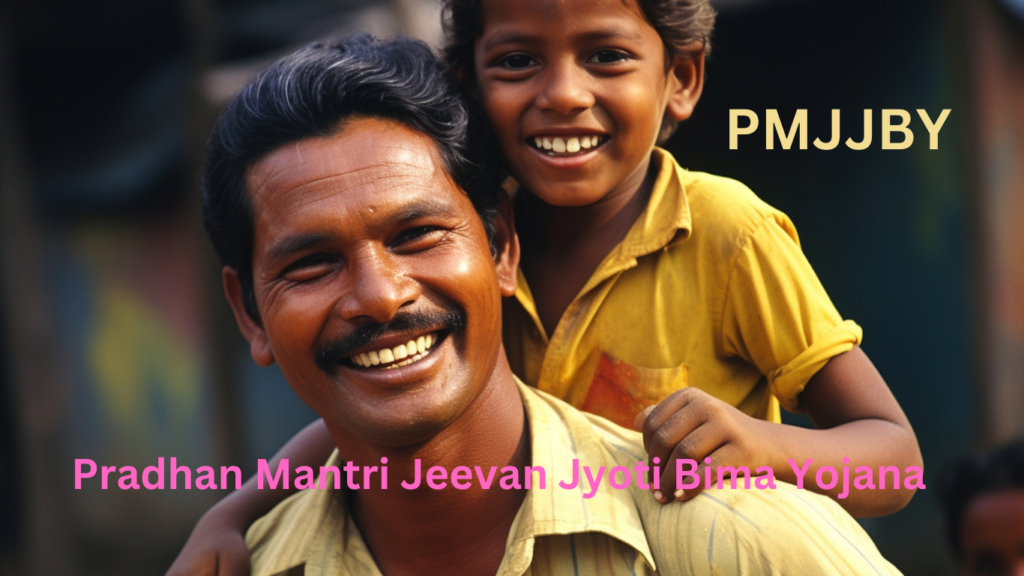The Pradhan Mantri Jan Dhan Yojana (PMJDY), launched by the Government of India in August 2014, is a flagship financial inclusion program aimed at ensuring access to financial services for every Indian citizen. The scheme primarily targets the unbanked and underbanked populations of the country, providing them with access to basic banking services such as savings and deposit accounts, remittance services, credit, insurance, and pensions.

PMJDY is a part of the broader agenda of financial inclusion, ensuring that even those from the remotest regions have access to banking services. By promoting financial literacy and creating a secure and accessible banking ecosystem, the scheme is helping to improve the socio-economic conditions of millions of Indians.
In this blog post, we will delve into the details of the Pradhan Mantri Jan Dhan Yojana, its objectives, benefits, eligibility criteria, and application process, providing a comprehensive guide to understanding the significance of this important initiative.
What is the Pradhan Mantri Jan Dhan Yojana (PMJDY)?
The Pradhan Mantri Jan Dhan Yojana (PMJDY) is a national financial inclusion scheme launched by the Government of India. It aims to provide universal access to banking services for every household in the country, ensuring that individuals have the tools and knowledge to manage their finances securely and effectively.
The scheme offers a wide range of financial services, including zero-balance savings accounts, accident insurance, life insurance, overdraft facilities, and access to credit for the marginalized sections of society. By bringing the unbanked population into the formal banking sector, PMJDY seeks to reduce the reliance on informal credit systems and improve financial security.
- Launch Date: August 28, 2014
- Launched By: Narendra Modi, Prime Minister of India
- Implemented By: Department of Financial Services, Ministry of Finance, Government of India
- Launch City: New Delhi, India
Objectives of the Pradhan Mantri Jan Dhan Yojana:
Universal Access to Banking Services:
The primary objective of PMJDY is to ensure that every Indian household has access to financial services, including savings accounts, remittance services, and credit facilities.
Promotion of Financial Literacy:
PMJDY also focuses on educating individuals about the importance of financial literacy and responsible money management, empowering them to make informed financial decisions.
Credit Availability:
The scheme provides access to affordable credit for the economically weaker sections of society, enabling them to build businesses, fund education, and meet financial emergencies.
Financial Protection:
By offering accident insurance and life insurance coverage to account holders, PMJDY aims to enhance financial protection for low-income families.
Direct Benefit Transfer (DBT):
PMJDY facilitates the Direct Benefit Transfer (DBT) of government subsidies, pensions, and other welfare benefits directly into the beneficiaries’ bank accounts, ensuring timely and transparent delivery of benefits.
Features of the Pradhan Mantri Jan Dhan Yojana:
Zero-Balance Savings Account:
One of the standout features of PMJDY is that it allows individuals to open a savings account with zero balance. This is especially beneficial for those who cannot maintain a minimum balance in their bank accounts due to financial constraints.
Insurance Coverage:
PMJDY provides a Rs. 2 lakh accidental insurance cover for all new accounts opened under the scheme. Additionally, account holders also get Rs. 30,000 life insurance cover.
Overdraft Facility:
PMJDY accounts are eligible for an overdraft facility of up to Rs. 10,000, after six months of satisfactory operation of the account. This feature provides financial flexibility to account holders.
Banking Facilities:
The scheme provides access to banking services such as deposit facilities, remittance, money transfer, and payment services through Business Correspondents (BCs) or Bank Mitras in rural areas.
Rupay Debit Card:
All PMJDY account holders receive a RuPay debit card, which allows them to make withdrawals and payments, helping to increase the cashless transactions in the country.
Direct Benefit Transfers (DBT): The scheme facilitates the Direct Benefit Transfer of government subsidies, welfare benefits, pensions, and other assistance directly into the bank accounts of the beneficiaries.
Eligibility Criteria for the Pradhan Mantri Jan Dhan Yojana (PMJDY) :
Indian Citizenship:
PMJDY is available for Indian citizens, including those in rural and urban areas.
Age Limit:
Individuals of all ages can apply for PMJDY, including children and senior citizens.
Documents Required:
Proof of Identity (POI): Aadhaar card, voter ID, PAN card, passport, etc.
Proof of Address (POA): Utility bills, ration card, passport, etc.
Passport-sized Photograph (if applicable)
Banking Facility Availability:
To open a PMJDY account, the person must have access to a bank branch or Business Correspondent (BC) in their locality.
Visit the official pmjdy website for more details
Benefits of the Pradhan Mantri Jan Dhan Yojana (PMJDY) :
Financial Inclusion for All:
PMJDY ensures that no individual is excluded from formal financial services, bringing millions of unbanked people into the banking system.
Access to Credit and Loans:
The scheme enables account holders to avail of overdraft facilities and micro-credit, which helps in meeting personal or business financial needs.
Social Security:
With insurance covers such as accident insurance and life insurance, PMJDY provides financial security to individuals, especially in case of accidents or untimely death.
Direct Benefit Transfers:
The DBT mechanism ensures that government subsidies, welfare schemes, and other financial benefits are delivered directly to beneficiaries’ accounts, eliminating middlemen and ensuring faster delivery.
Promotes Cashless Transactions:
The issuance of RuPay debit cards and the push for digital banking help promote cashless transactions and financial literacy.
Read This Also: Atal Innovation Mission Scheme
Application Process for the Pradhan Mantri Jan Dhan Yojana (PMJDY) :
- Visit the Nearest Bank Branch or BC (Bank Mitra):
To apply for a PMJDY account, visit the nearest bank branch or business correspondent (BC) in your area. - Fill out the Application Form:
Complete the PMJDY application form, which can be obtained from the bank branch or BC. The form requires basic personal information such as name, address, and contact details. - Submit KYC Documents:
Along with the form, submit the required KYC documents such as an Aadhaar card, voter ID, or any other government-approved identity proof, and address proof. - Account Opening:
Once the documents are verified, your PMJDY account will be opened, and you will receive your RuPay debit card and passbook. You will also be enrolled in the Direct Benefit Transfer system.
Documents Required for the Pradhan Mantri Jan Dhan Yojana (PMJDY) :
- Identity Proof (POI): Aadhaar card, voter ID, PAN card, passport, etc.
- Address Proof (POA): Utility bills, ration card, passport, etc.
- Photographs: Passport-sized photograph of the applicant.
- Aadhaar Card (preferably): For linking with the bank account and enabling the Direct Benefit Transfer system.
Challenges of the Pradhan Mantri Jan Dhan Yojana :
Limited Awareness in Remote Areas:
In rural and remote areas, there may be a lack of awareness about the scheme, preventing many people from availing its benefits.
Banking Infrastructure Issues:
While PMJDY has significantly improved banking access, challenges remain in areas with poor banking infrastructure and limited access to Bank Mitras.
Dependence on Technology:
For those who are not tech-savvy, using digital banking and RuPay debit cards may present challenges, especially in regions with low internet penetration
Read This Also: Pradhan Mantri Suraksha Bima Yojana
Recent Developments in the Pradhan Mantri Jan Dhan Yojana (PMJDY) :
- PMJDY 2.0 (2021):
In 2021, the Government of India launched an enhanced version of PMJDY, termed PMJDY 2.0, which focuses on increasing the use of digital banking and expanding the scope of financial services under the scheme. - Linking with Jan Aushadhi Kendra:
PMJDY accounts are now linked with Jan Aushadhi Kendras, enabling beneficiaries to access affordable medicines and health services.
The Pradhan Mantri Jan Dhan Yojana (PMJDY) has made a significant contribution to financial inclusion in India, bringing millions of individuals, especially from rural and underserved areas, into the formal banking system. By offering access to banking, credit, insurance, and government subsidies, PMJDY is empowering citizens and enabling them to take control of their financial future. The scheme plays a pivotal role in shaping a financially inclusive and empowered India, ensuring that every individual has the tools to lead a secure and prosperous life.
FAQs about the Pradhan Mantri Jan Dhan Yojana (PMJDY)
- Q: Can I open a Pradhan Mantri Jan Dhan Yojana account without an Aadhaar card?
A: Yes, you can open a PMJDY account using other identity proofs such as voter ID, PAN card, or passport if you do not have an Aadhaar card. - Q: Is there any minimum balance requirement for PMJDY accounts?
A: No, PMJDY accounts do not have any minimum balance requirement, and they can be opened with a zero balance. - Q: What are the benefits of having a PMJDY account?
A: PMJDY offers zero-balance accounts, life and accident insurance, overdraft facilities, and access to Direct Benefit Transfers, among other benefits. - Q: Can I withdraw money from my PMJDY account from any ATM?
A: Yes, you can use your RuPay debit card to withdraw money from any ATM. However, there might be charges for ATM withdrawals beyond a certain limit.
All information provided in this blog is for general informational purposes only. We recommend verifying details from official government sources before applying to any scheme.


